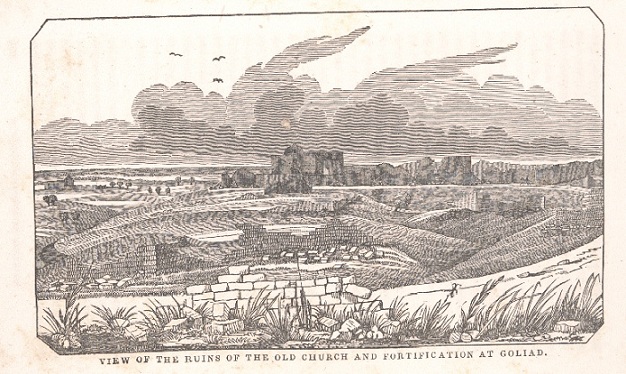| << Chapter < Page | Chapter >> Page > |
View of ruins of old church and fortification at goliad in southern texas

By introducing a discussion on the importance of religion as a belief structure, teachers can guide students to explore what “conversion” really means. At its foundation, the mission was a religious institution created to spread the Catholic faith in the New World, and especially along the fringes of the Spanish frontier. Missionaries were charged with bringing the light of Christ to the “barbarians” – to care for their “souls and temporalities” as Frejes wrote (17a). As part of this religious mission, Spanish missionaries, and Iberians in general, sought to eradicate Satan from the Americas, where Europeans believed he had a strong hold among the “pagan” natives (Cañizares-Esguerra 3-6). Teachers might ask students what it means to “convert”? How did conversion signify a change in spiritual and cultural structures? If natives were considered “pagan” and “barbarian” before conversion, what, then, does conversion signify during this time period?
Jesuit priest

For more specific examples of missionary work, teachers can refer students to the three central missionary orders in the Americas: the Franciscans, Dominicans, and Jesuits. As a classroom activity, teachers might split students into three groups, having them conduct research on one of the three different orders. Students could find information that responds to the following questions: What was the credo of this religious group? Where did they conduct their missionary work in the Americas? How did they interact with natives? What type of strategies did they use? The Spanish Jesuits, for example, converted the landscape of New Spain into a Christian landscape like that of Old Spain. By reorganizing communities around churches, chapels, and shrines, Jesuit missionaries converted pagan rites into Christian rites as a way in which to “baptize” local religious practices (Reff 24-31). Franciscans employed a series of oral and visual performance techniques to teach natives through music, dance, and pictures (De Marco 37). As these examples demonstrate, Christian missionary orders utilized a number of different tactics to convert the natives of the Americas. Considering these tactics can help students to see how missionaries engaged with natives and how many of their tactics represent a blending of Catholic and native spiritual practices. It is also important to remind students that missionaries’ interaction with natives was marked by an ambivalent relationship with the Spanish government. While missionaries worked within a system that exploited natives to forward the colonization process, many missionaries also defended native rights.
Teachers might also highlight other aspects of Spanish Catholicism that grew alongside the colonial system and mission. For instance, missionary groups constructed the infrastructure for Catholic education in the Americas, which became a source of anxiety for Protestant Americans. For an interesting reference, teachers can direct students toward Lyman Beecher’s A Plea for the West , a vehemently anti-Catholic, nineteenth-century sermon that warns against the spread of Catholic and, in particular, Jesuit education.
Study Questions:
Bibliography:
Cañizares-Esguerra, Jorge. Puritan Conquistadors: Iberianizing the Atlantic, 1550-1700 . Stanford: Stanford UP, 2006.
De Marco, Barbara. “Conversion Practices on the New Mexico Frontier.” The Spiritual Conversion of the Americas. Ed. James Muldoon. Gainesville: UP of Florida, 2004. 36-56.
Jackson, Robert H. Missions and the Frontiers of Spanish America . Scottsdale: Pentacle, 2005.
Muldoon, James, ed . The Spiritual Conversion of the Americas . Gainesville: UP of Florida, 2004.
Reff, Daniel T. “Making the Land Holy: The Mission Frontier in Early Medieval Europe and Colonial Mexico.” The Spiritual Conversion of the Americas. Ed. James Muldoon. Gainesville: UP of Florida, 2004. 17-35.
Rivera, Luis N. A Violent Evangelism: The Political and religious Conquest of the Americas . Louisville: Westminster, John Know P, 1992.
Weber, David J. The Spanish Frontier in North America. Brief Edition. New Haven: Yale UP, 2009.

Notification Switch
Would you like to follow the 'Catholic missions and spanish colonialism' conversation and receive update notifications?